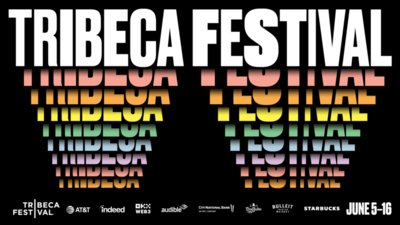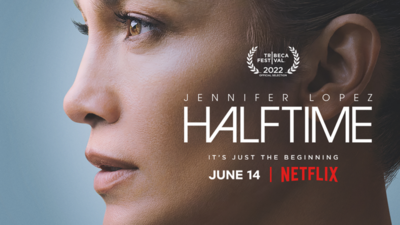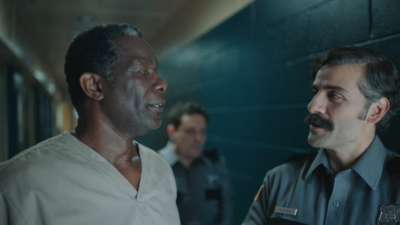
BY KAREN KEMMERLE |
Matt Wolf Talks ‘Teenage,’ Blogging and Our Culture’s Obsession with Youth
Based on Jon Savage’s book, 'Teenage' is a mesmerizing archival documentary by Matt Wolf from TFF 2013. It is a must-see for history buffs and documentary film lovers.
If you thought the concept of the “teenager” started in the 1950s, you’d be wrong. Documentarian Matt Wolf took on the task of adapting Jon Savage’s critically acclaimed book, Teenage, into a living, breathing documentary that provides a collage of the origins of youth culture. Using narration from Jena Malone, Ben Whitsaw, Julia Hummer and Jessie Usher, the documentary is comprised of recreations and archival material that includes the diaries of actual mid-century teenagers with a soundtrack by Deerhunter’s Bradford Cox.
We got the chance to talk with Wolf about his process, working with actors for the first time and what documentary trends he’d like to see go away.
Tribeca: Teenage doesn’t feel like your typical archival documentary. In fact, you’ve taken to calling it a “living collage.” How did you come up with that term? How does it apply to the film?
Matt Wolf: Jon Savage, who wrote the book Teenage, is well-known for writing the book England’s Dreaming, which is kind of the definitive history of Punk Rock. When I read his book, I noticed that it felt like he was coloring early 20th century history with a punk perspective, which really inspired me. I thought, what if I try to make a different sort of historical documentary that departs from the academic conventions of a typical PBS historical film? How could I potentially have some of these punk aesthetics my own filmmaking?
Jon told me that in 1970s England, all these kids would take thrift clothes from previous generations—rocker suits, zoot suits—and cut them up and reassemble them with safety pins, into something that was provocative and new. He called that “living collage”, and I thought, “Wow, that’s an incredible premise for filmmaking too.”
Tribeca: What were your initial reactions to Jon Savage’s book, and how did you approach him about making the documentary?
MW: I’m kind of obsessed about hidden histories and forgotten biographies so I really was intrigued by the premise of his book. I’d just assumed teenage culture started in the 1950s with rockers and beatniks, but I love the idea of there being this whole prehistory that goes so far back. The notion of a story that ends at the beginning really inspired me.
So when I read his book, I also became obsessed with the biographies of all these obscure adolescent figures that he uncovered in his research, but for filmmaking purposes, I thought I wanted to tackle the whole book in one ambitious project. Jon and I had a mutual friend in England who connected us, and we started talking and realized that we both of us had very similar ideas about what a film of Teenage should look like.
I work with digital all the time, but when I do recreations, I like to shoot in the appropriate format of the era.
Tribeca: I was really surprised that the roots of the teen culture go back to when Child Labor Laws were finally established. After the slaughter that occurred in World War I, the disillusioned youths created this culture that rejected the values of the older generation. Could an event other than war have spurred this movement?
MW: I think war is one thing that creates a generation gap, but so is economic depression. I think that when young people face that kind of uncertainty, and there are no jobs for them after they get their education, there is this sense of doubt about the previous generation; there’s a sense of resentment about the problems that were created by the previous generation but inherited by the youths.
After the Great Depression, many youths were involved in political and radical political movements. I think we’ve seen it recently with the economic uncertainty and the high rates of unemployment for youths today.
Tribeca: It was refreshing to see that so much of the film dealt with the women’s perspective. Do you think that young women are natural catalyst and why?
MW: Yeah, absolutely. Young people were facing this sort of unprecedented oppression and weren’t recognized as a distinct social class. Young women had that two-fold; they were being oppressed not just because they were young, but also because they were women. They faced misogyny and ageism. I think that young women are sort of natural adopters of new styles and new forms of expression. Throughout history, they’ve been able to popularize new trends in a way that is not just commercial, but also creative.
Tribeca: Like you said, you chose to focus on a few representative figures: The Bright Young Thing, Brenda Dean Paul; the Hitler Youth, Melita; Tommy Scheel, and Warren Hall. Why these four people in particular? I imagine the book was full of characters.
MW: I wanted to create a composite picture of the teenager who was about to be born. I think a certain kind of demographic balance was important. I wanted to have female and male characters from different classes and races from America, England, and Germany. But I also wanted to have a variety of types. To me, what connects these characters is that they’re all rebelling in different ways.
Brenda Dean Paul was like a proto-Lindsay Lohan. She was someone the public loved to hate, who was the subject of paparazzi photos and intrigue, and was known for her partying. She was a flamboyant, stylish, and glamorous figure. Melita Maschmann is a very extreme character. She was a Hitler Youth leader, but she was rebelling against her parents and their generation’s politics in a certain way when she joined the Hitler Youth. Tommy Scheel is the hippest of them all, smuggling swing records and British fashion into Germany to rebel against the Nazi regime. He is almost like a proto-Punk, you could say.
Warren Hall really intrigued me, because these other characters are really larger than life. They have extreme politics or have a radical style. Warren’s just kind of this ordinary kid who wants to fit in; he’s a Boy Scout, but he’s African-American and he’s hampered by the color of his skin. He’s rebellious in that he feels anger and frustration at the racism of this era. He wants a better future than his father.

Tribeca: I feel like Hollywood has tried to cover some of these tales, but not to the extent that you did. I remember vividly seeing Swing Kids when I was a kid. Why now are we looking back at the teenager with such depth? What is it about our culture now?
MW: It’s an interesting question. Could this film be made in a different cultural moment, or is now the moment it should be made? It’s hard for me to answer because I feel like our culture’s obsession with youth is ongoing. Whether it was five years ago, or five years from now, we’re still going to be idealizing young people and condemning them. There’s this loaded, charged relationship to youth in society; people want to stay young forever, and they think their generation was more political and interesting and creative than the generation that exists now.
I think that this conflicted and charged relationship with youth is ongoing. Usually when people look at youth and make films about youth, the emphasis is on the now. I thought it would be provocative to look at history, not just the recent past, but also the more distant past, to try to get some perspective on the way we are today.
Tribeca: Teenage would not have been half as affective without Bradford Cox’s atmospheric yet engaging score. Can you discuss your collaborative process?
MW: From the get-go, I knew I wanted to combine contemporary music with vintage, archival footage, because when you put original Dixieland jazz band next to images of flapper girls dancing, it feels a bit stodgy. When you put that imagery with contemporary music, all of a sudden, you see yourself in those images. I see myself with my friends. That transformation was really important for me.
I chose to work with Bradford, and approached him because his music blurs nostalgic, vintage sounds with a very contemporary quality. Plus, I’m just a huge fan of his music. I knew the themes of the film would interest him because of his work.
I think that this conflicted and charged relationship with youth is ongoing.
Tribeca: Most of the film is taken directly from the archival footage, but you and your team did do several recreations, which blended seamlessly with the rest of the film. Why did you make this decision?
MW: I wanted to telescope into the experiences of these individual characters. These characters are really obscure—never filmed—and only Brenda Dean Paul was photographed a handful of times. Out of necessity, I had to use recreations to render portraits of these forgotten youths. The style of recreations I do is inspired by the actual archival footage I work with. I wanted them to have the same tactility and character as the vintage footage.
Tribeca: How did you and your editing team achieve that? I assume there must be some sort of process?
MW: On an editorial level, we assembled the film and left holes in it for these character portraits as a last step. From a production standpoint, we did a lot of experimenting and testing to make 16mm film look like actual film stock from the 20s, 30s, and 40s. We used old C-mounted lenses that we stripped the coating off of, and then my cinematographer Nick Benjen actually hand degraded a lot of our prints with dust, scratches, bleach, and coffee filters. We used old analog forms of duping, like bleached bypass prints. It’s almost like a VHS stub, but through a chemical 16 mm process. All of that stuff degraded the film, made it softer, and kind of dirtier.
Tribeca: Did you shoot anything in this documentary digitally?
MW: I work with digital all the time, but when I do recreations, I like to shoot in the appropriate format of the era. I like the footage to look like it’s from the period it’s supposed to represent. If I shoot an interview today, I shoot it in the kind of technology we use now. If I’m shooting something that’s supposed to represent something from the past, I like to use the format that would have been used at that time.
Tribeca: Well-known actors like Jena Malone and Ben Whitshaw provided narration for the film. How did they come to the project? As a documentarian by nature, what was your approach to “directing” their voiceovers?
MW: I do a lot of interviews in my work so I’m used to working with people on an intimate level. Working with actors just felt like a natural extension of that—albeit with more control. I was working with some incredible actors who were super exciting to be collaborating with.
I met Jena through another director who had been collaborating with her. She came on early and recorded these subjective statements by teenagers from different periods. I connected to Ben Whitshaw through a mutual friend, and the other narrators and actors were from a more traditional casting process.
Tribeca: During the making of Teenage, you started a companion blog about youth culture, which you kept up even after post-production finished. What was the impetus for that project?
MW: This film opens up a whole can of worms about post-war youth culture. I wanted to have an outlet to look at post-war and contemporary youth culture phenomena and see how those things relate to the themes of the film. I started the blog three years ago, with a teaser for the film, which was used for fundraising purposes.
I publicly announced the film before it was completed to build momentum for the project, as well as create a contract with my audience to complete it and build a following for the project. It’s a thing I’ve been doing for years, and in a way, it’s a secondary outlet for me to explore some of my interests that have come from the making of the film.
There’s this loaded, charged relationship to youth in society; people want to stay young forever, and they think their generation was more political and interesting and creative than the generation that exists now.
Tribeca: Teenage came to have some grants and funding. What advice would you give to filmmakers who are looking to go that same route?
MW: I think the most important thing is not to wait for opportunities to come to you, to continue making progress on your projects by any means necessary. If that means attaching advisors, or interview subjects, or getting commitments from people to work with you—I think anything you can do to develop and move progress forward on your project helps get stakeholders interested and committed to working with you.
Tribeca: You didn’t go to any of the crowdfunding platforms.
MW: No, we got early grants, including a grant from the Tribeca Film Institute. We developed a partnership with Cinereach too, which was a grantor of the project, and then came on as the production company.
Tribeca: Is there any trend in the documentary film world that you’re eager to see go away?
MW: I think there’s a lot of literalism in documentary and people feel like they can only use imagery when it literally illustrates points being made. I appreciate films that are kind of more visually adventurous, and use archival imagery, recreations, and vérité footage in more lyrical and expressionistic ways.
Teenage is now playing in NYC and will expand to select theaters across the country in the coming weeks.

